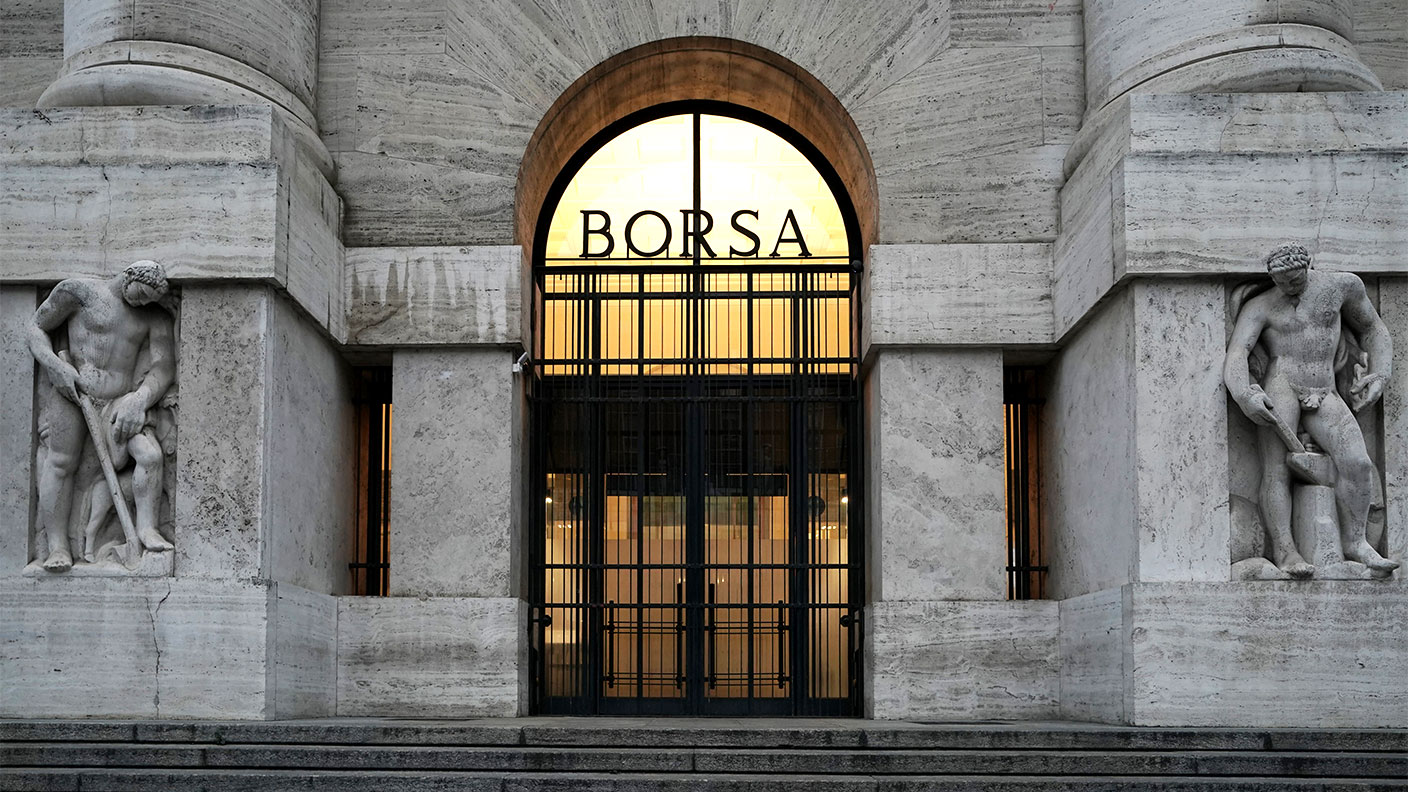Overlooked European stocks are a solid bargain
The lack of speculative exuberance in European stocks compared to US markets bodes well for investors seeking less tech-heavy drama and more deep value.

US president Joe Biden’s mammoth $1.9trn relief bill has left Europe’s own stimulus efforts looking scrawny, says Johanna Treeck in Politico. Figures from the Organisation for Economic Co-operation and Development show that US pandemic stimulus measures amount to 13% of GDP, much higher than the 7% spent in the eurozone.
That partly reflects America’s lack of a social safety-net, which forced Washington to step in with extra spending last year, Nicolas Goetzmann of asset manager Financière de la Cité told Aziliz Le Corre in Le Figaro. Nevertheless, there is now a “chasm” between US fiscal largesse and Europe’s more cautious approach.
The recovery gap
The result? The European Central Bank projects that the euro area won’t regain its pre-crisis GDP until the second quarter of 2022, a year behind the US. Europe’s policymakers are reluctant to part with their “old economic totems” of budgetary discipline above everything else.
MoneyWeek
Subscribe to MoneyWeek today and get your first six magazine issues absolutely FREE

Sign up to Money Morning
Don't miss the latest investment and personal finances news, market analysis, plus money-saving tips with our free twice-daily newsletter
Don't miss the latest investment and personal finances news, market analysis, plus money-saving tips with our free twice-daily newsletter
The stockmarket doesn’t seem to mind, says Anna Hirtenstein in The Wall Street Journal. The Euro Stoxx 50 index is up by 7.5% for the year to date, compared with the S&P 500’s 6.5% gain. Italy’s FTSE MIB has returned more than 8%. The continent’s bourses are profiting from the ongoing “rotation” from growth to value stocks.
European markets are heavily weighted towards value sectors such as financials, industrial and energy companies, which jointly comprise 38% of the pan-European Euro Stoxx 600 index. The recent uptick in yields has also boosted the region’s unloved banks.
Super Mario
Despite a “sometimes sclerotic image”, Europe remains “a world leader” in sectors such as luxury goods (Louis Vuitton, Gucci), cars (Daimler) and “high-end engineering” (Siemens), notes Martin Sandbu in the Financial Times. An early push into green policies has helped renewable-energy businesses steal a march on the global competition.
Europe’s growing technology scene is often overlooked, adds Stefan Wagstyl in the same paper. While lacking household names to rival Facebook or Apple, the continent specialises in the “nuts and bolts” of industrial and business-to-business tech; Dutch firm ASML plays a vital role in global chip production. Europe isn’t perfect, but “it’s a lot better than many investors think”. The news is also brightening on the political front, says The Economist. Recent Dutch election results could make one of the EU’s most frugal members “a tad less parsimonious”. New Italian prime minister Mario Draghi is rallying support for much-needed reforms to Italy’s complicated tax code.
Mebane Faber of Cambria Investment Management notes that Italian shares started 2021 on a cyclically adjusted price/earnings (Cape) ratio of 19.8, a discount to Japan. On 18.7, German stocks are 50% cheaper than their US peers. Spain, on 13.6, is even cheaper than the FTSE 100. The lack of any US-style speculative exuberance in Europe, says The Economist, is a plus for investors seeking less GameStop-style drama and more “deep value”.
Get the latest financial news, insights and expert analysis from our award-winning MoneyWeek team, to help you understand what really matters when it comes to your finances.
Alex is an investment writer who has been contributing to MoneyWeek since 2015. He has been the magazine’s markets editor since 2019.
Alex has a passion for demystifying the often arcane world of finance for a general readership. While financial media tends to focus compulsively on the latest trend, the best opportunities can lie forgotten elsewhere.
He is especially interested in European equities – where his fluent French helps him to cover the continent’s largest bourse – and emerging markets, where his experience living in Beijing, and conversational Chinese, prove useful.
Hailing from Leeds, he studied Philosophy, Politics and Economics at the University of Oxford. He also holds a Master of Public Health from the University of Manchester.
-
 Quality emerging market companies with consistent returns
Quality emerging market companies with consistent returnsOpinion Mark Hammonds, portfolio manager at Guinness Global Investors, selects three emerging market stocks where he'd put his money
-
 UK blue chips offer investors reliable income and growth
UK blue chips offer investors reliable income and growthOpinion Ben Russon, portfolio manager and co-head UK equities, ClearBridge Investments, highlights three British blue chips where he'd put his money
-
 British blue chips offer investors reliable income and growth
British blue chips offer investors reliable income and growthOpinion Ben Russon, portfolio manager and co-head UK equities, ClearBridge Investments, highlights three British blue chips where he'd put his money
-
 Coreweave is on borrowed time
Coreweave is on borrowed timeAI infrastructure firm Coreweave is heading for trouble and is absurdly pricey, says Matthew Partridge
-
 Renewable energy funds are stuck between a ROC and a hard place
Renewable energy funds are stuck between a ROC and a hard placeRenewable energy funds were hit hard by the government’s subsidy changes, but they have only themselves to blame for their failure to build trust with investors
-
 Profit from document shredding with Restore
Profit from document shredding with RestoreRestore operates in a niche, but essential market. The business has exciting potential over the coming years, says Rupert Hargreaves
-
 The war dividend – how to invest in defence stocks as the world arms up
The war dividend – how to invest in defence stocks as the world arms upWestern governments are back on a war footing. Investors should be prepared, too, says Jamie Ward
-
 Literacy Capital: A trust where great returns fund a good cause
Literacy Capital: A trust where great returns fund a good causeThere’s plenty to like about specialist private-equity trust Literacy Capital, says Max King
-
 An AI bust could hit private credit – could it cause a financial crisis?
An AI bust could hit private credit – could it cause a financial crisis?Opinion Private credit is playing a key role in funding data centres. It may be the first to take the hit if the AI boom ends, says Cris Sholto Heaton
-
 8 of the best ski chalets for sale now
8 of the best ski chalets for sale nowThe best ski chalets on the market – from a traditional Alpine-style chalet in Switzerland to an award-winning Modernist building in Japan’s exclusive ski areas